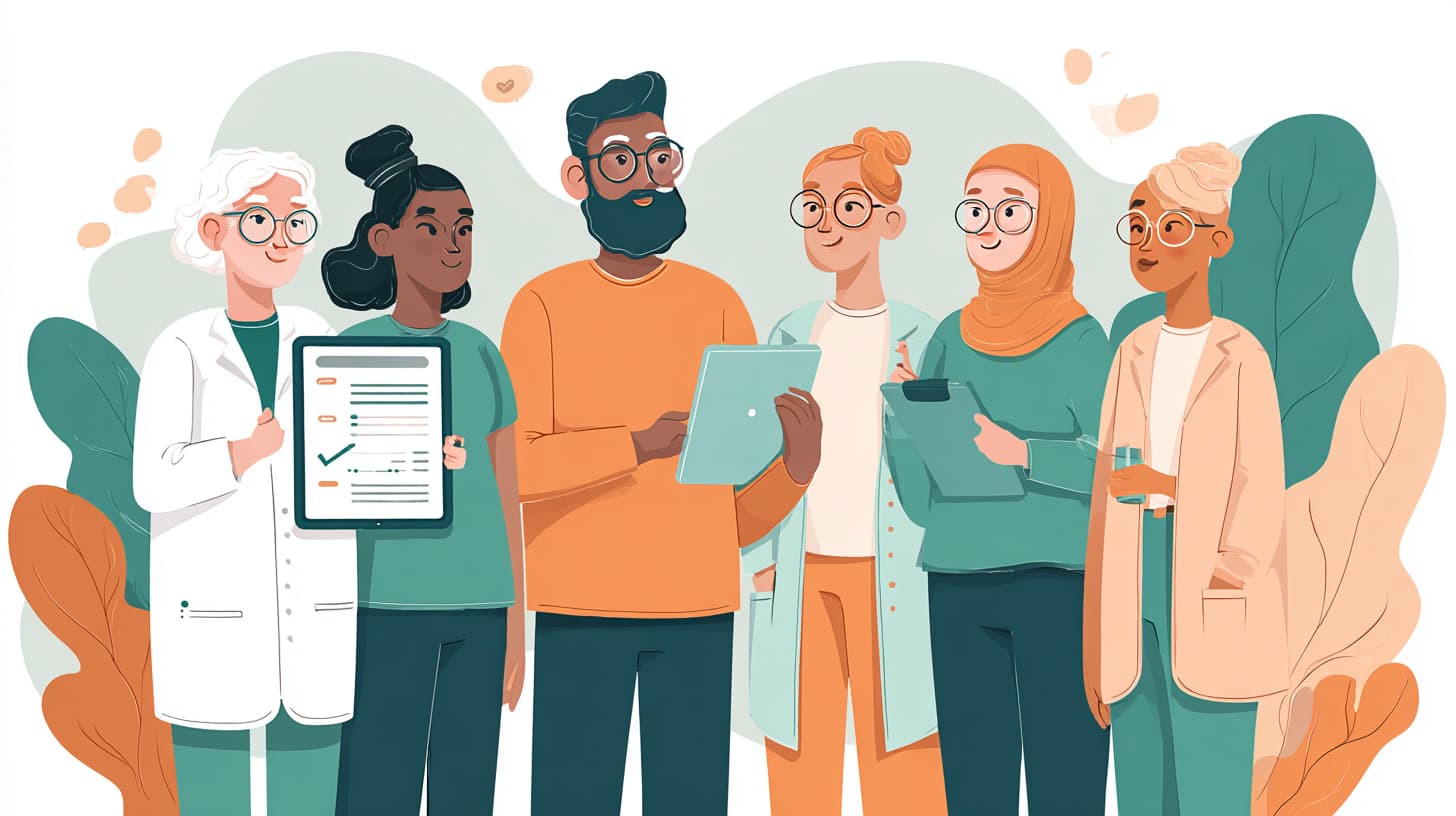Top 7 Benefits of Remote Patient Monitoring for Clinics and Patients

Top 7 Benefits of Remote Patient Monitoring for Clinics and Patients
It’s Monday morning, and the nursing team at River Valley Family Medicine starts their day with more than coffee—they start with clarity. Overnight, two patients’ blood pressure readings trended dangerously high, while another’s oxygen saturation dipped below their normal range. Within minutes, calls are placed, medication adjustments are made, and a potential hospitalization is prevented—all without the patients stepping foot in the clinic.
This is the promise of Remote Patient Monitoring (RPM). By combining connected devices, secure data transmission, and timely clinical action, RPM bridges the gap between visits, creating a safety net for patients and a strategic advantage for clinics.
Below are seven key benefits of implementing a well-run RPM program, each backed by evidence and illustrated with real-world examples.
1. Improved Chronic Disease Management
Chronic conditions such as hypertension, diabetes, chronic obstructive pulmonary disease (COPD), and heart failure demand consistent oversight. RPM offers care teams daily access to vital data, enabling earlier interventions that can slow disease progression and prevent complications.
Example: A patient with uncontrolled diabetes has their blood glucose monitored remotely. If readings spike, a nurse can intervene that same day rather than waiting months for the next visit.
Evidence: CMS reports that timely interventions through RPM can reduce readmissions for chronic disease patients, improving both quality scores and costs.
How Lara Health helps: Lara Health’s platform integrates seamlessly with a clinic’s EHR, automatically flagging abnormal readings and delivering alerts directly into daily workflows—ensuring that follow-ups happen quickly and reliably.
2. Reduced Hospitalizations and Emergency Visits
When issues are spotted sooner, they’re often easier—and far less costly—to address.
Example: In heart failure, rapid weight gain can indicate dangerous fluid retention. RPM-connected scales trigger alerts when a patient’s weight increases by more than two pounds in 24 hours, prompting immediate medication adjustments.
Evidence: AHRQ’s 2023 review found that RPM interventions for heart failure can cut hospitalizations by 20–25% in the first year.
How Lara Health helps: Lara Health offers customizable alert thresholds so teams are notified about meaningful changes without being overwhelmed by minor fluctuations.
3. Increased Practice Revenue
RPM isn’t just clinically effective—it’s financially sustainable. CMS reimburses RPM services under specific CPT codes:
- 99453 — Device setup and patient education (one-time).
- 99454 — Device supply with at least 16 days of data in a 30-day period (monthly).
- 99457 — First 20 minutes of clinical staff, physician, or other qualified health professional time in a calendar month, requiring synchronous interactive communication with the patient..
- 99458 — Each additional 20 minutes.
Example ROI calculation:
How Lara Health helps: Lara Health automates RPM billing workflows, ensuring that all documentation—patient consent, device usage logs, and time tracking—is ready for claims submission and audit.
4. Higher Patient Engagement
Daily interaction with their own health data can transform how patients see their care.
Example: A hypertensive patient uses a connected blood pressure cuff. If readings are high, they get a follow-up call the same day. This immediate link between action and response often strengthens adherence to both medication and lifestyle changes.
Evidence: The American Heart Association highlights that engaged patients are more likely to manage chronic illness successfully, and RPM provides the tools for consistent engagement.
How Lara Health helps: The patient portal shows personalized trends and progress, turning data into motivation.
5. More Efficient Care Team Workflows
RPM allows clinics to direct resources precisely where they’re needed.
Example: Instead of reviewing every chronic care patient equally, a clinic uses RPM to focus on the 15% showing concerning trends that week, freeing time for other priorities.
Evidence: CMS notes that targeted outreach enabled by RPM can improve both care coordination and operational efficiency.
How Lara Health helps: Lara Health’s dashboard ranks patients by urgency, ensuring staff attention goes to those most in need.
6. Better Quality Metrics and Incentive Payments
For clinics in value-based care models, improving outcomes means better reimbursement.
Example: A practice improves its blood pressure control metric by using RPM to identify and address uncontrolled readings faster.
Evidence: CMS includes chronic disease measures in MIPS scoring, where higher performance can lead to incentive payments.
How Lara Health helps: Built-in reporting tools track outcomes and generate documentation for quality programs.
7. Stronger Patient-Provider Relationships
Frequent, proactive communication builds trust that lasts.
Example: An elderly COPD patient knows their oxygen saturation is being tracked daily. When a nurse calls after an abnormal reading, it reinforces the patient’s confidence and loyalty.
Evidence: Satisfaction surveys show patients value responsiveness, and RPM creates more touchpoints for that responsiveness to shine.
How Lara Health helps: Secure messaging and alert-driven follow-up create a continuous loop of communication between visits.
Implementation Strategy
The strongest RPM programs start with a focused patient group, thorough staff training, and clear alert protocols. Patient consent—verbal or written—must be documented in the medical record. Gradual scaling helps avoid staff overload while maintaining high onboarding quality.
Common Pitfalls to Avoid
Some clinics stumble by enrolling more patients than they can manage, skipping patient device education, or ignoring alerts without timely follow-up. Each of these erodes both clinical effectiveness and patient trust. A measured rollout, combined with clear workflows and accountability, helps prevent these issues.
Compliance and Audit Readiness
RPM billing requires proof of patient consent, documentation of device setup, at least 16 days of readings in a month for CPT 99454, and time logs for synchronous communication under CPT 99457/99458. Lara Health captures these automatically within its platform, keeping practices ready for audit without extra administrative burden.
Every reading in an RPM program is an opportunity—an early warning, a teaching moment, or a reassurance that care is working. Book a demo with Lara Health to see how proactive, connected care can transform outcomes for your patients and your practice.
References
CMS, CY2025 Physician Fee Schedule Final Rule, 2024.
American Heart Association, “Patient Engagement in Chronic Disease Management,” 2023.
AHRQ, “Telehealth: Remote Monitoring for Patients with Chronic Conditions,” Evidence Brief, 2023.
Lara Health's platform helps medical practices deliver better patient outcomes and stronger financial performance.
Our platform streamlines chronic care management (CCM), remote patient monitoring (RPM) and advanced care coordination − empowering your team to focus on care, not paperwork.
With a powerful billing engine supporting 55+ CPT codes, Lara Health simplifies reimbursements and optimizes every step of your workflows.
See how it works, or discover how Lara Health is shaping the future of connected care.
To learn more about our mission, start here. If you're looking for a new career direction, check out our recruiting pages.




